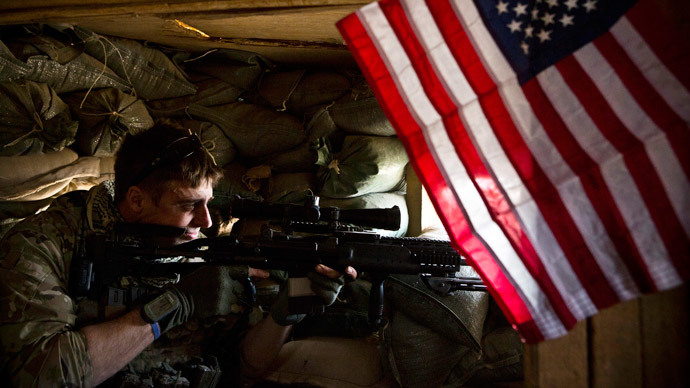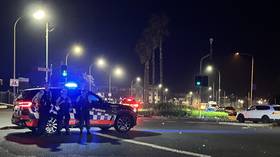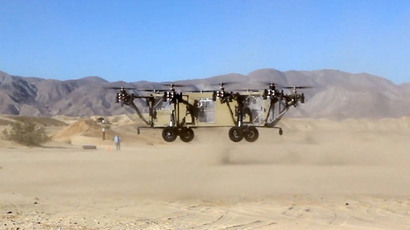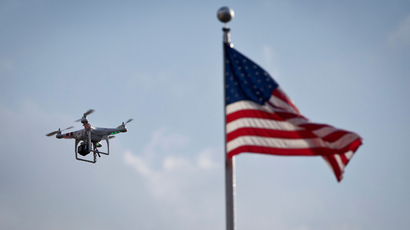Fire and Forget: DARPA successfully tests revolutionary self-guiding bullet (VIDEO)

US military research agency DARPA says it is homing in on its long-term ambition of producing self-guided bullets, after staging a test in which a sniper was able to shoot at a target at a radically wrong angle, and yet still hit it perfectly.
“DARPA’s Extreme Accuracy Tasked Ordnance (EXACTO) program
recently conducted the first successful live-fire tests
demonstrating in-flight guidance of .50-caliber bullets,”
said the organization, which posted a recording of the trial on
YouTube.
“This video shows EXACTO rounds maneuvering in flight to hit
targets that are offset from where the sniper rifle is aimed.
EXACTO’s specially designed ammunition and real-time optical
guidance system help track and direct projectiles to their
targets by compensating for weather, wind, target movement and
other factors that could impede successful hits.”
But behind the dry description is a fascinating use of technology
that the Pentagon has invested more than $25 million into since
the program’s inception in 2008.
While the exact technologies used remain classified, an automatic
aiming rifle consists of two parts – a guidance system and the
bullet. The first tracks the target, meaning that the sniper
simply has to “see” it with a with a sophisticated optical sight,
and send signals to the bullet. With a number of fins and an
on-board computer, the bullet – which may also calculate air
pressure – constantly re-adjusts its path to home in on the
target. To make rapid fire even simpler, it may simply react to
any heat or movement near the target area, in what is known as
“fire-and-forget.”
In 2012 another government researcher, Sandia National Labs,
tested its own guided bullet, and claimed similar accuracy and
distance results for it, though it uses a laser beam for
targeting – which could make it less useful in smoky or foggy
weather conditions, as well as being easier to spot for the
enemy.
Currently, US Army snipers are expected to hit a target 600
meters away, nine times out of ten. But after a certain point,
about a kilometer away, accuracy falls off sharply, even in
perfect conditions. Besides, current technology simply does not
allow snipers to easily estimate the impact of humidity and
cross-winds on the bullet trajectory, meaning that even the best
will often have to fire several bullets before they even get
close – ruining the surprise factor, and placing themselves in
danger of return fire. EXACTO promises a range of up to 2,000
meters, as well as a virtual indifference to conditions.

And the US Army is genuinely relying on this project.
As its tactics have evolved from head-on combat to tactical
missions against small groups of insurgents in treacherous
terrain – in which loss of American lives must be minimized – so
the number of snipers has risen. According to Time magazine,
there were 250 in the entire army before the Iraq war, and that
number more than trebled at the peak of the simultaneous US
operations abroad. While overall military capacity may decrease
in the coming years, with the Obama administration keen to avoid
being trapped in unwinnable regional conflicts, the role that
snipers will play will only grow.
While the success of the DARPA program may fill the corridors of
the Pentagon with cheer, as with any improvement that increases
the potency of easily-available weapons (EXACTO could even be
fitted onto an ordinary rifle), it has its own risks. The US Army
is not likely to make EXACTO available to civilians, but the
technology will filter down and spread abroad, and Sandia
National Labs has already announced that it plans to make its
system commercially available. And while military innovation is
necessary, the US will no doubt be worried about seeing rifles
that can hit from 2km away, wielded by untrained foreign
militants and disturbed American gunmen in the near future.














